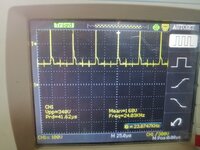odaysaad
Newbie
I have design interleaved boost converter with three inductor operates with 3pwm with phase difference 120 degree..iput voltage 12 volt and output voltage 168 volt but with high spike in output voltage can any one help me to reduce the spike in output voltage please
